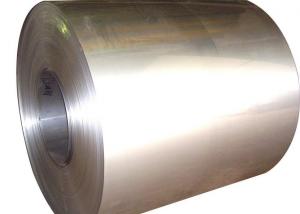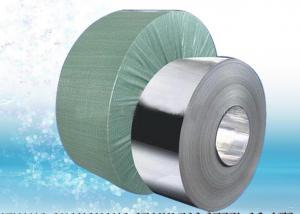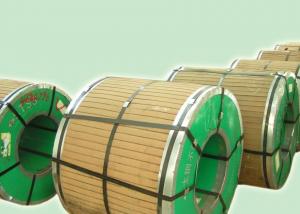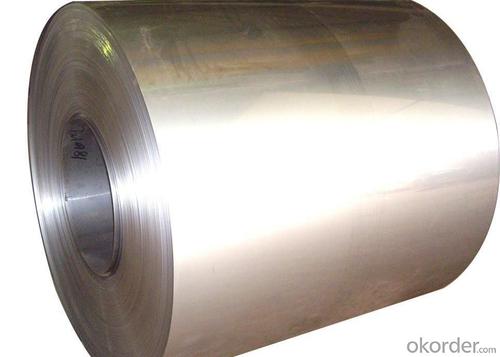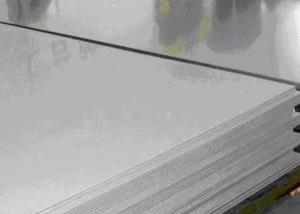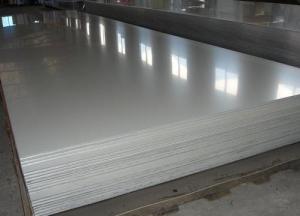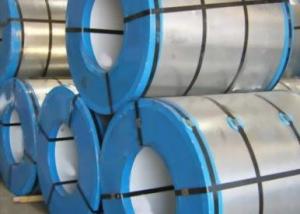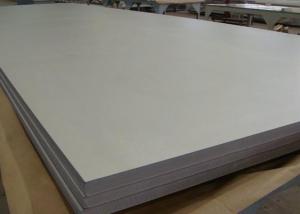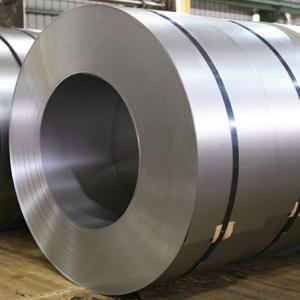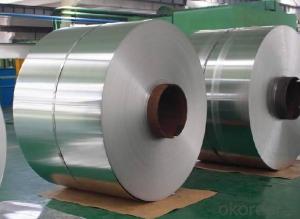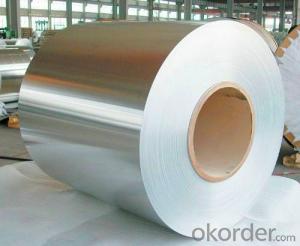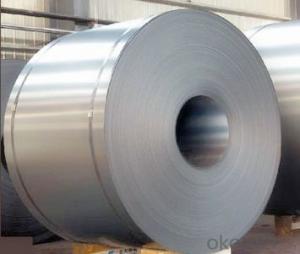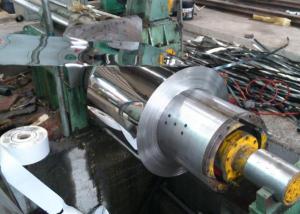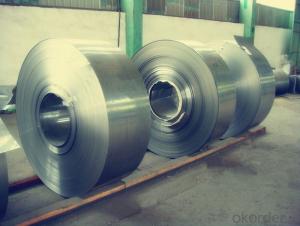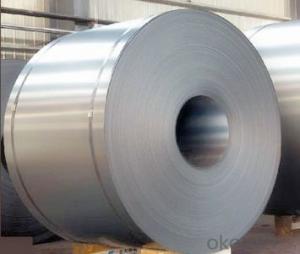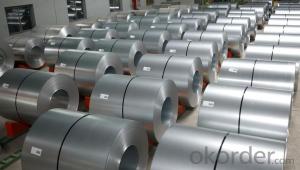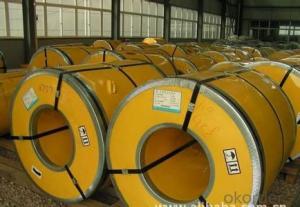AISI 201 Stainless Steel Coil
- Loading Port:
- China Main Port
- Payment Terms:
- TT or LC
- Min Order Qty:
- 1 Ton m.t.
- Supply Capability:
- 1000 Tons Per Month m.t./month
OKorder Service Pledge
OKorder Financial Service
You Might Also Like
AISI 201 Stainless Steel Coil
1. Chemical composition
|
C |
Si |
Mn |
P |
S |
Ni |
Cr |
|
max0.15 |
max1.00 |
5.50-7.50 |
max0.06 |
max0.03 |
max1.00 |
16.00-18.00 |
2. Mechanical properties
|
Yield Strength |
Tensile |
Elongation |
Hardness (HV) |
Hardness (HRB) |
|
245 |
640 |
40 |
253 |
100 |
3. Standard: AISI, ASTM, GB, EN, DIN, JIS
4. Surface: 2B, NO.1, BA, NO.4, Hairline, SB, Mirror finish, Anti-skid, Cherkered etc.
5. Size: Thickness: 0.3-3mm (cold rolled), 3-40mm (hot rolled)
Width: 1000mm or 1219mm or 1240mm for cold rolled, 1500mm for hot rolled.
Length: As customers' request.
6. MOQ: 1 Ton
7. Payment terms:T/T or L/C
8. Packing: Seaworthy package with wooden or Iron pallets with the paper and the steel strip, or as customers' request.
9. Delivery time: Usually about 7 days after we confirming the order, or according to your quantity.
If you have any question or demand, pls feel free to contact me.
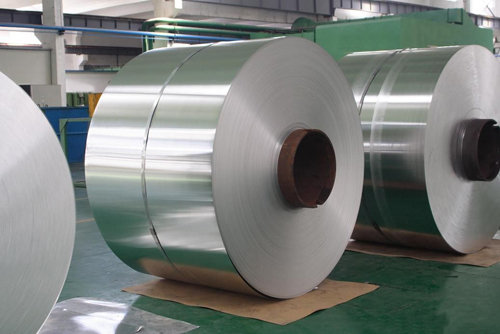

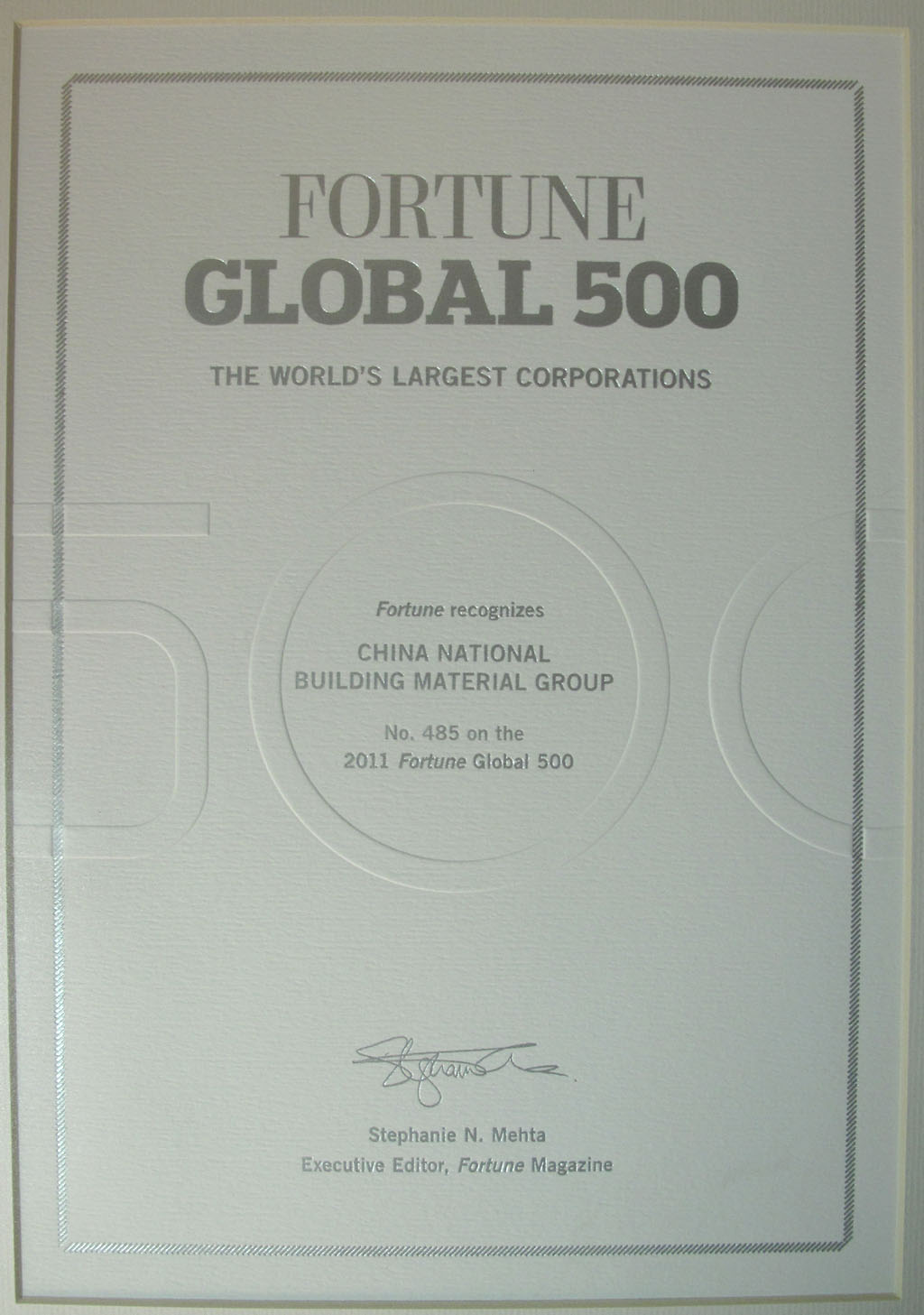
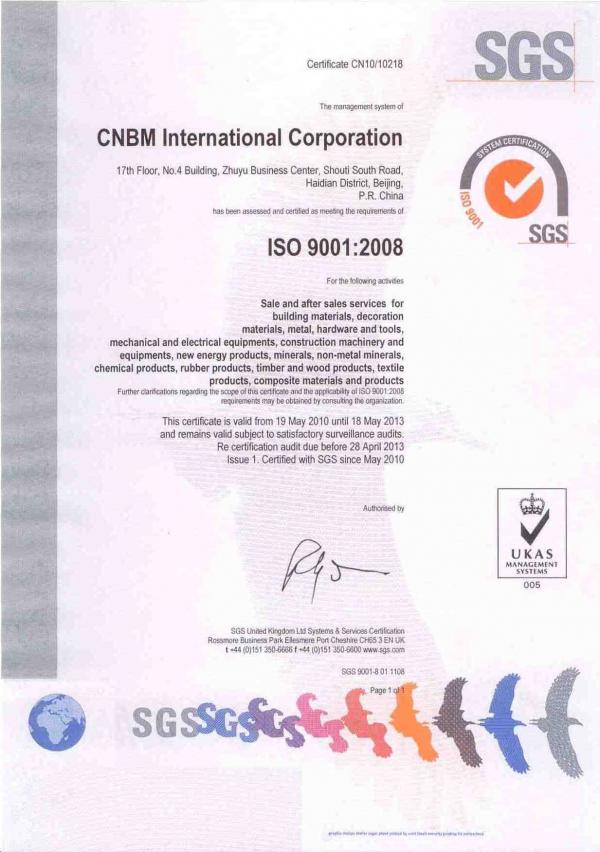
- Q:Can stainless steel strips be used in the production of automotive parts?
- Stainless steel strips possess the capability to be utilized in the manufacturing of automotive components. Stainless steel, being an incredibly versatile material, offers remarkable strength, durability, and resistance against corrosion, rendering it suitable for a diverse range of automotive applications. The utilization of stainless steel strips enables the production of a wide array of automotive parts, encompassing body panels, trim, exhaust systems, brackets, and reinforcements. The remarkable strength-to-weight ratio of stainless steel facilitates the creation of lightweight automotive components without compromising their strength and performance. Furthermore, the resistance of stainless steel to rust and corrosion guarantees that automotive parts crafted from this material exhibit exceptional durability and can endure harsh environmental conditions, such as exposure to moisture, road salt, and chemicals.
- Q:Are stainless steel strips suitable for decorative embossing?
- Yes, stainless steel strips are suitable for decorative embossing. Stainless steel is a durable and versatile material that can be easily shaped and embossed to create intricate patterns and designs. It is often used in decorative applications such as architectural accents, signage, and artwork. The smooth and reflective surface of stainless steel also adds a sleek and modern aesthetic to any project. Additionally, stainless steel is resistant to corrosion and can withstand exposure to various weather conditions, making it a long-lasting option for decorative embossing.
- Q:What are the factors affecting the abrasion resistance of 111 stainless steel strips?
- The factors affecting the abrasion resistance of 111 stainless steel strips can include the hardness of the steel, the presence of alloying elements such as chromium and nickel, the surface finish of the strips, the load or pressure applied during abrasion, and the type and size of abrasive particles involved. Other factors like temperature, lubrication, and the presence of corrosive or abrasive environments can also influence the abrasion resistance of the stainless steel strips.
- Q:What are the recommended safety precautions for handling 111 stainless steel strips?
- When handling 111 stainless steel strips, it is important to follow certain safety precautions to minimize the risk of accidents or injuries. Here are some recommended safety measures: 1. Personal Protective Equipment (PPE): Always wear appropriate PPE, such as gloves, safety glasses, and protective clothing, to protect yourself from potential hazards such as sharp edges or flying debris. 2. Proper Handling Techniques: Use proper lifting and handling techniques when dealing with stainless steel strips to prevent strain or back injuries. If the strips are heavy or bulky, consider using lifting equipment or asking for assistance. 3. Secure Storage: Store stainless steel strips in a secure and organized manner to prevent tripping hazards and ensure they do not fall and cause injuries. Use appropriate racks or shelves designed for storing metal strips. 4. Avoid Sharp Edges: Be cautious of the sharp edges commonly found on stainless steel strips. Handle them with care to avoid cuts or abrasions. Consider using gloves specifically designed for working with sharp-edged materials. 5. Fire Prevention: Stainless steel is non-combustible, but it can transfer heat effectively. Be cautious when handling hot strips or working in environments with open flames or sparks. Ensure fire prevention measures are in place, such as fire extinguishers and a clear evacuation plan. 6. Chemical Exposure: Some stainless steel strips might have been treated with chemicals or coatings. If you are unsure about the presence of any hazardous substances, consult the material safety data sheet (MSDS) or seek guidance from a supervisor or safety professional. 7. Proper Disposal: When disposing of stainless steel strips, follow local regulations and guidelines. Avoid throwing them in regular waste bins, as they can pose risks to sanitation workers or the environment. Consider recycling options or consult local authorities for proper disposal methods. Remember, these safety precautions are general guidelines, and it is important to consult specific safety instructions provided by the manufacturer or your employer.
- Q:What are the common uses of stainless steel strips in the HVAC industry?
- Due to their exceptional properties and versatility, stainless steel strips find wide usage within the HVAC industry. Here are some common applications: 1. Ductwork: Stainless steel strips are frequently employed to construct ducts in HVAC systems. These ducts exhibit durability, resistance to corrosion, and the ability to withstand high temperatures and pressure. They provide a dependable and enduring solution for air distribution in various types of buildings, including residential, commercial, and industrial structures. 2. Heat exchangers: HVAC systems heavily rely on heat exchangers, and stainless steel strips are often used in their construction. Heat exchangers made from stainless steel strips facilitate efficient heat transfer, ensuring effective heating or cooling of air or water. The corrosion resistance of stainless steel enables the handling of diverse fluids while preventing equipment failure due to rust or corrosion. 3. Ventilation systems: The manufacturing of ventilation systems, encompassing air handling units, exhaust fans, and air filters, commonly involves the use of stainless steel strips. These systems necessitate materials capable of withstanding harsh environments and maintaining proper airflow. Stainless steel strips offer resistance to corrosion, heat, and chemical exposure, making them an ideal choice for constructing robust and efficient ventilation systems. 4. Pipe and tubing: In HVAC applications, stainless steel strips are frequently utilized in the production of pipes and tubing. These components transport fluids such as refrigerants, coolants, and condensate. By providing excellent resistance to corrosion, stainless steel strips play a vital role in preventing leaks and ensuring the longevity of HVAC systems. 5. Furnace parts: Various furnace components, including burners, heat shields, and combustion chambers, are fabricated using stainless steel strips. These parts face exposure to high temperatures, flames, and corrosive gases. Stainless steel strips offer high-temperature resistance, oxidation resistance, and durability, ensuring the efficient and safe operation of furnaces within HVAC systems. In summary, the HVAC industry highly values stainless steel strips due to their durability, resistance to corrosion, high-temperature resistance, and versatility. They play a crucial role in ensuring HVAC systems operate efficiently, reliably, and last long across diverse applications.
- Q:What is the difference between annealed and tempered stainless steel strips?
- Annealed and tempered stainless steel strips are two different heat treatment processes that result in different properties and characteristics of the material. Annealing is a process in which the stainless steel strip is heated to a specific temperature and then slowly cooled, usually in a controlled atmosphere. This process helps to relieve internal stresses and improve the ductility and machinability of the material. Annealed stainless steel strips have a lower hardness and are softer, making them easier to work with and form into various shapes. They also have improved resistance to corrosion and are less prone to cracking or breaking under stress. On the other hand, tempering is a process that involves heating the stainless steel strip to a specific temperature and then rapidly cooling it. This process is typically done after the steel has been hardened through quenching, which involves rapidly cooling the material to increase its hardness. Tempering helps to reduce the brittleness of the hardened steel and improve its toughness and ductility. Tempered stainless steel strips have a higher hardness and are more resistant to wear and deformation, making them suitable for applications that require higher strength and durability. In summary, annealed stainless steel strips are softer, more ductile, and have improved corrosion resistance, while tempered stainless steel strips are harder, more wear-resistant, and have higher strength and toughness. The choice between annealed and tempered stainless steel strips depends on the specific application and the desired properties of the material.
- Q:Can stainless steel strips be used in the energy sector?
- Yes, stainless steel strips can be used in the energy sector. Stainless steel is known for its durability, corrosion resistance, and high strength-to-weight ratio, making it suitable for various applications in the energy sector. It is commonly used in the construction of power plants, oil and gas pipelines, renewable energy infrastructure, and nuclear power plants. Stainless steel strips can be used for electrical transmission, heat exchangers, and other components that require resistance to extreme temperatures and harsh environments.
- Q:Stainless steel pan with magnetic or good without magnetic stainless steel pot?
- Good with magnetic and without magnetism. See what you like.
- Q:Can stainless steel strips be used in automotive applications?
- Yes, stainless steel strips can be used in automotive applications. Stainless steel is known for its durability, corrosion resistance, and strength, making it suitable for various automotive components such as exhaust systems, trim, and brackets.
- Q:Can stainless steel strips be recycled?
- Indeed, it is possible to recycle stainless steel strips. This material is exceptionally recyclable due to its ability to maintain its qualities and durability even after being melted and reprocessed. The recycling procedure encompasses gathering the stainless steel strips, categorizing them based on their composition and thickness, and subsequently melting them in a furnace to eliminate any impurities. Once the impurities are eradicated, the molten stainless steel is solidified and converted into fresh stainless steel products or components. By recycling stainless steel, not only are valuable natural resources preserved, but the energy and emissions required for manufacturing new stainless steel from raw materials are also reduced, making it a choice that is kind to the environment.
1. Manufacturer Overview |
|
|---|---|
| Location | Guangzhou,China |
| Year Established | 2001 |
| Annual Output Value | Above US$0.5 Million |
| Main Markets | Southeast Asia, Europe |
| Company Certifications | ISO 9001:2008; |
2. Manufacturer Certificates |
|
|---|---|
| a) Certification Name | |
| Range | |
| Reference | |
| Validity Period | |
3. Manufacturer Capability |
|
|---|---|
| a)Trade Capacity | |
| Nearest Port | Shanghai |
| Export Percentage | 30% |
| No.of Employees in Trade Department | 10 People |
| Language Spoken: | English;Chinese |
| b)Factory Information | |
| Factory Size: | Above 30,000 square meters |
| No. of Production Lines | Above 7 |
| Contract Manufacturing | OEM Service Offered;Design Service Offered |
| Product Price Range | Average |
Send your message to us
AISI 201 Stainless Steel Coil
- Loading Port:
- China Main Port
- Payment Terms:
- TT or LC
- Min Order Qty:
- 1 Ton m.t.
- Supply Capability:
- 1000 Tons Per Month m.t./month
OKorder Service Pledge
OKorder Financial Service
Similar products
Hot products
Hot Searches
Related keywords
